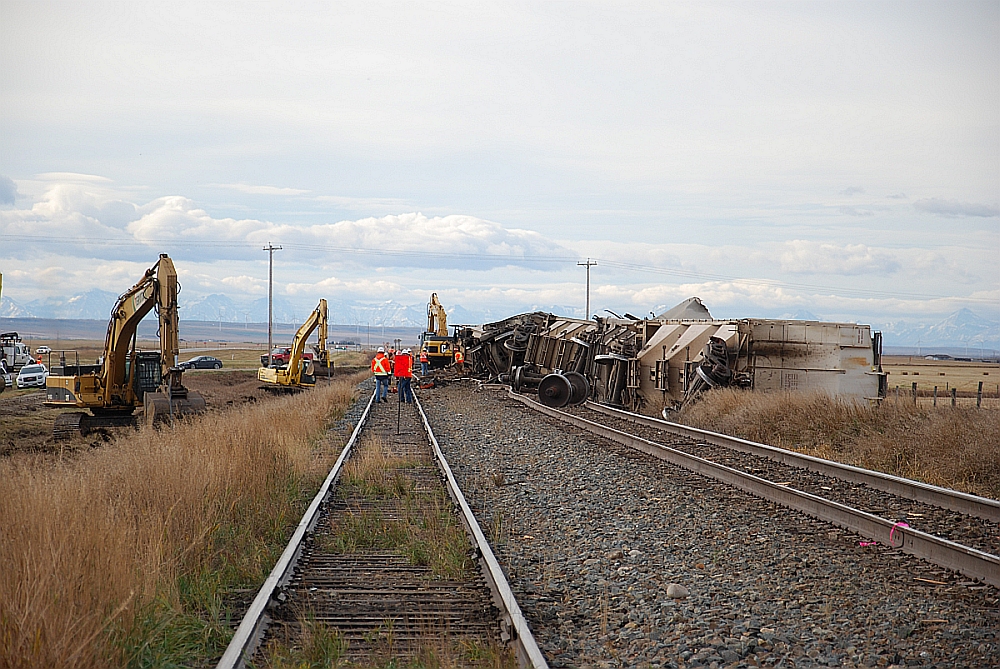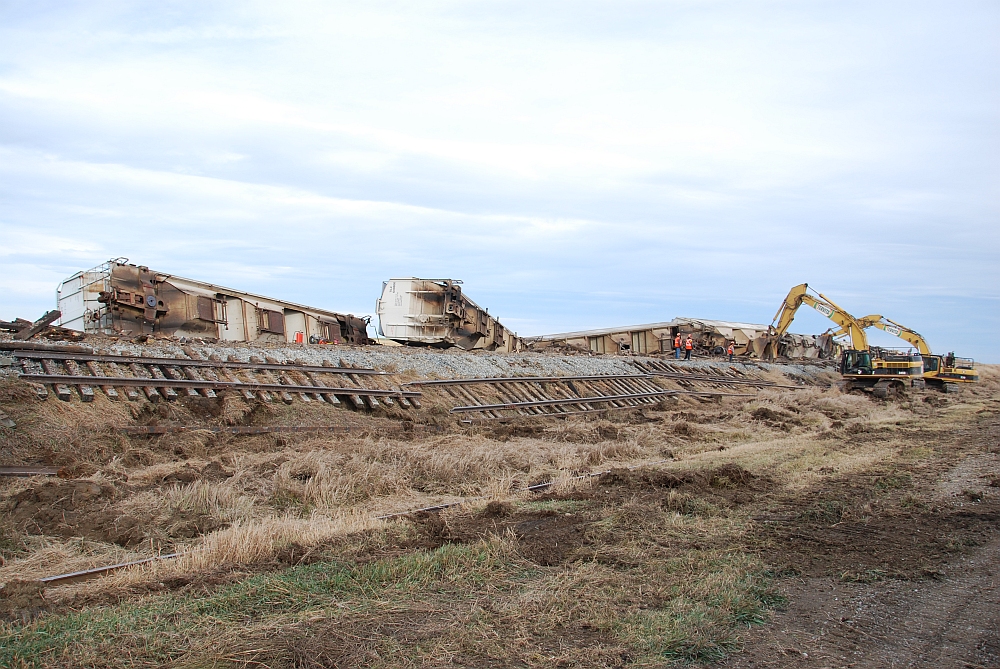Main-track derailment
Canadian Pacific Railway
Freight train 374-230
Mile 23.40, Crowsnest Subdivision
Pearce, Alberta
The occurrence
On 06 November 2014, at about 0115 Mountain Standard Time, eastbound Canadian Pacific Railway freight train 374-230 derailed 17 empty covered hopper cars at Mile 23.40 of the Crowsnest Subdivision near Pearce, Alberta. About 1000 feet of the main track was damaged and an additional 600 feet of the main track and of an adjacent storage track was destroyed. Two empty gondola cars in the storage track were struck by the derailing train, resulting in their derailment. There were no injuries.
Media materials
News releases
Broken rail due to undetected defect led to November 2014 train derailment near Pearce, Alberta
Read the news release
Deployment notice
TSB deploys a team of investigators to the site of a CP train derailment in Pearce, Alberta
The Transportation Safety Board of Canada (TSB) is deploying a team of investigators to Pearce, Alberta, where a train operated by Canadian Pacific Railway (CP) derailed. The TSB will gather information and assess the occurrence.
Investigation information
Download high-resolution photos from the TSB Flickr page.
Class of investigation
This is a class 3 investigation. These investigations analyze a small number of safety issues, and may result in recommendations. Class 3 investigations are generally completed within 450 days. For more information, see the Policy on Occurrence Classification.
TSB investigation process
There are 3 phases to a TSB investigation
- Field phase: a team of investigators examines the occurrence site and wreckage, interviews witnesses and collects pertinent information.
- Examination and analysis phase: the TSB reviews pertinent records, tests components of the wreckage in the lab, determines the sequence of events and identifies safety deficiencies. When safety deficiencies are suspected or confirmed, the TSB advises the appropriate authority without waiting until publication of the final report.
- Report phase: a confidential draft report is approved by the Board and sent to persons and corporations who are directly concerned by the report. They then have the opportunity to dispute or correct information they believe to be incorrect. The Board considers all representations before approving the final report, which is subsequently released to the public.
For more information, see our Investigation process page.
The TSB is an independent agency that investigates air, marine, pipeline, and rail transportation occurrences. Its sole aim is the advancement of transportation safety. It is not the function of the Board to assign fault or determine civil or criminal liability.


